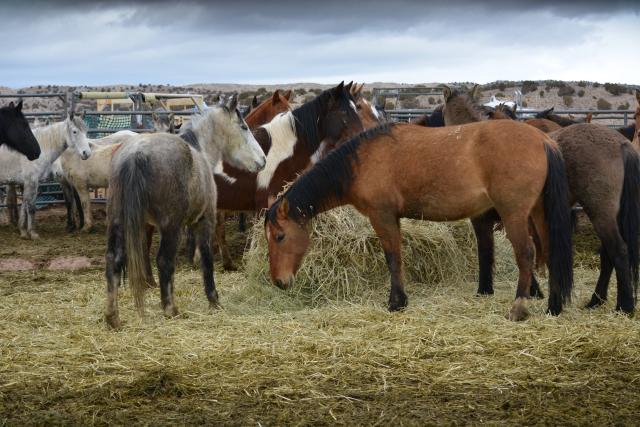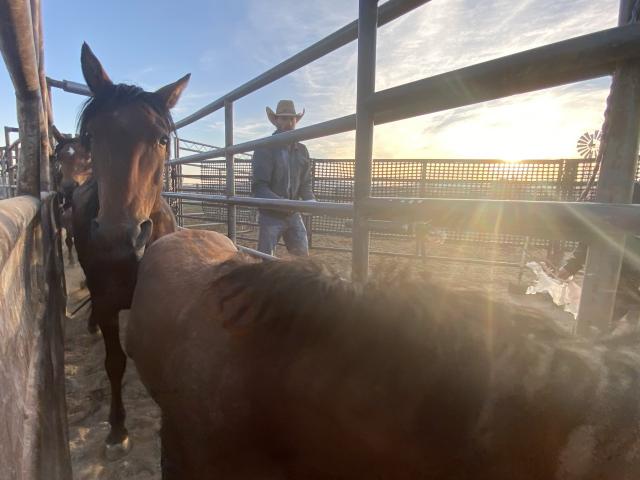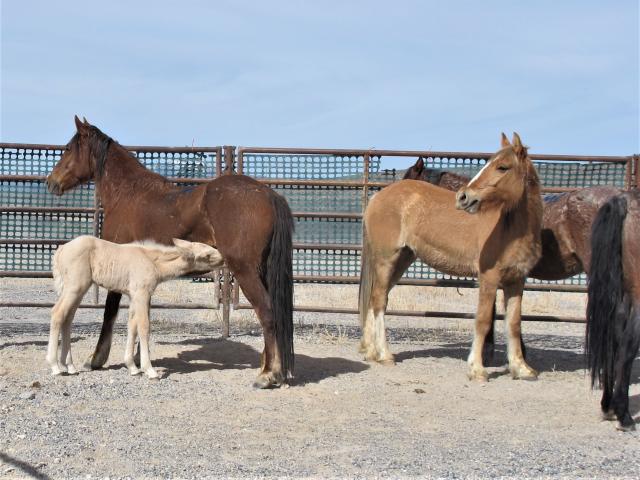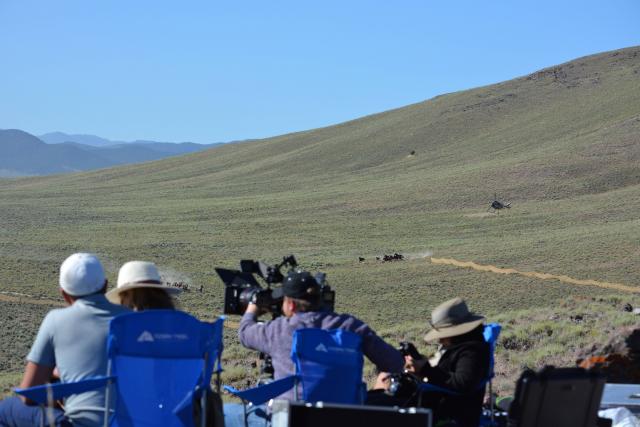You are viewing ARCHIVED content published online before January 20, 2025. Please note that this content is NOT UPDATED, and links may not work. Additionally, any previously issued diversity, equity, inclusion or gender-related guidance on this webpage should be considered rescinded. For current information, visit https://www.blm.gov/blog.
Top 5 things to know about wild horse and burro gathers
The Bureau of Land Management has the responsibility to manage and protect healthy herds of wild horses and burros as well as the public lands on which they roam. However, because most wild horse and burro herds have virtually no natural predators that can control population size, herds can increase rapidly and outgrow the resources available to them. Overpopulated herds disrupt the ecological balance on public lands by overgrazing vegetation and depleting and degrading water sources, especially during drought.
To ensure sustainable yield on public lands, the BLM manages all uses to achieve a healthy balance, including livestock grazing, recreation and wild horses and burros. When managed at sustainable levels and balanced with other species, wild horses and burros can contribute to thriving and healthy ecological systems on public lands. To achieve this balance, the BLM conducts periodic “gathers” to safely remove excess animals from overpopulated herds. Fertility control is also used, sometimes as part of a gather, to reduce herd growth and lower the need for future gathers.
But what are gathers, and how do they work? Here are the top 5 things you should know about these wild horse and burro gathers.
1. Gathering animals from an overpopulated herd is the best and most humane way to quickly reduce overpopulation.
As part of its management strategy to protect the health of wild horses and burros, the BLM uses a combination of bait-trap and helicopter-assisted gather techniques to safely remove animals and reduce overpopulation. Gathers are also an important tool for applying fertility control vaccines to captured animals. During emergency situations, a gather is the best way for the BLM to rescue imperiled animals. Gathered animals are checked by BLM staff and a veterinarian and prepared for private adoption, transported to long-term care on a pasture, or treated with fertility control and/or released back to the range.

2. BLM and contract staff adhere to a Comprehensive Animal Welfare Program during all gathers.
The Comprehensive Animal Welfare Program outlines required best practices and humane handling standards that prioritize the health and well-being of the wild animals. For example, the standards do not allow contact with helicopters, traveling excessive distances and/or gathering in extreme temperatures.
3. Injuries to wild horses and burros during gathers are rare.
A recent study published in the Journal of Equine Veterinary Science found that BLM's wild horse and burro gathers are considered much safer than similar gather operations (usually for scientific research projects) of elk, deer, and caribou. In white tailed deer capture operations, for example, between 2 and 20 deer die, out of every 100 deer captured. On the average helicopter gather, there was fewer than 1 death from a capture-related injury out of every 200 wild horses captured. Nevertheless, the BLM always seeks to improve the safety of its gathers and takes any incident that results in an injury to an animal very seriously.

4. Helicopter-assisted wild horse gathers are paused during peak foaling season
The pause on gathering during peak foaling season for wild horses (typically March through June) is meant to further reduce any potential risk to newborn foals and pregnant mares. Even outside that time period, additional safeguards are provided to protect foal health, including limiting the speed of gathering groups of animals that include foals, and quickly uniting any separated foals with their mares/jennies.

5. The BLM welcomes public observation of wild horse and burro helicopter-assisted gathers on public lands.
When gather operations take place on private land, the BLM makes every attempt to obtain access for public observers. Public observation at bait traps is generally not offered because it can interfere with gather operations. For those who are unable to attend the gathers, the BLM makes information available on its website and social media platforms.

Related Content
Related Stories
- Popular posts: BLM's most viewed blogs of 2025
- “Where did my horse come from?” BLM launches a new way for adopters, trainers and others to learn about their wild horses and burros
- Lake Havasu Fisheries Improvement Program is the gift that keeps giving
- BLM is thankful for public lands volunteers
- BLM delivers on administration priorities
